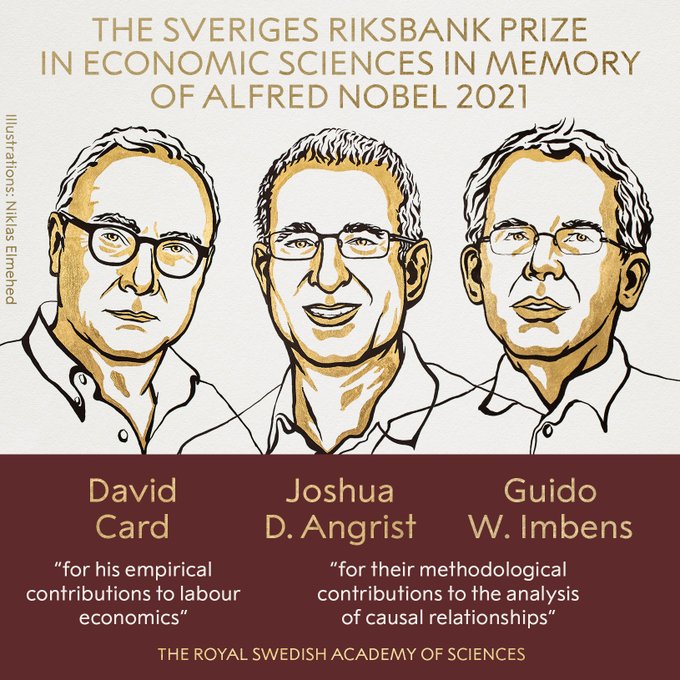
Dmitry Arkhangelsky
@ArkhangelskyD
Followers
1,854
Following
446
Media
8
Statuses
169
PhD at @StanfordGSB ; Associate Professor at @CEMFInews , Madrid; Research Affiliate at @cepr_org
Madrid, Spain
Joined September 2013
Don't wanna be here?
Send us removal request.
Explore trending content on Musk Viewer
#خلصوا_صفقات_الهلال1
• 679538 Tweets
ラピュタ
• 400960 Tweets
Atatürk
• 378690 Tweets
#พรชีวันEP15
• 262598 Tweets
Johnny
• 211552 Tweets
Megan
• 208387 Tweets
Sancho
• 144476 Tweets
MEGTAN IS COMING
• 124393 Tweets
RM IS COMING
• 117515 Tweets
olivia
• 116132 Tweets
namjoon
• 113028 Tweets
#初音ミク誕生祭2024
• 99083 Tweets
#4MINUTES_EP6
• 78959 Tweets
#バルス祭り
• 60562 Tweets
Labor Day
• 47215 Tweets
كاس العالم
• 45542 Tweets
CHERISH TWENTY WITH WONYOUNG
• 45148 Tweets
ミクさん
• 44503 Tweets
ムスカ大佐
• 40176 Tweets
#フロイニ
• 30348 Tweets
ŹOOĻ記念日
• 23985 Tweets
ミクちゃん
• 21751 Tweets
Día Internacional
• 19189 Tweets
滅びの呪文
• 17882 Tweets
Javier Acosta
• 16877 Tweets
Ramírez
• 16338 Tweets
ロボット兵
• 13588 Tweets
ナウシカ
• 13577 Tweets
Lolla
• 13199 Tweets
Lo Celso
• 11040 Tweets
Last Seen Profiles
Very happy to finally see this work with
@guido_imbens
published (after 6 years)!
The main message of the paper is that instead of using FE you can control flexibly for constructed group-level characteristics - the procedure that we call the Generalized Mundlack estimator.
Recently published in REStud, ``Fixed Effects and the Generalized Mundlak Estimator'',
From
@ArkhangelskyD
and
@guido_imbens
:
2
64
212
10
76
444
1/7 Want to use this opportunity to explain what’s going on in the paper. Imagine we observe many units over a few periods and want to learn a causal effect of some treatment. Key: treatment varies a lot both over time and across units.
An approach to identification of causal effects in which assumptions are made about the relation between the treatment assignment and the unobserved confounders, from
@ArkhangelskyD
and Guido W. Imbens
0
14
89
4
64
282
Thanks
@SorryToBeKurt
!
I am deeply humbled and honored by this promotion. I want to thank my colleagues at
@CEMFInews
, who have provided nonstop guidance and mentorship for the last six years. I cannot imagine a more supportive and friendlier environment than the one in Madrid.
Big congrats to
@ArkhangelskyD
who was just granted tenure at
@CEMFInews
and promoted to tenured associate professor!
Great news for Dmitry and for CEMFI!
5
2
133
18
2
152
1/5 (Reweighted) two-way regression strikes back in our new paper with Guido Imbens,
@lihua_lei_stat
, and Xiaoman Luo ()! Can (and should) be used whenever data allows us to meaningfully discuss the model for the treatment assignment.
1
26
143
Thanks
@CavaliereGiu
!
Our goal was to connect topics: synth and TWFE, negative controls and sufficient stats, design and model-based. We also flag understudied issues, e.g., dynamics and sequential exogeneity, which have a long tradition in panel data literature
Check it out!
Hi
#EconTwitter
! 📈
Keen on the latest in causal inference with panel data models?
Check out 👇 this new
#econometrics
survey by
@ArkhangelskyD
(
@CEMFInews
) and
@guido_imbens
(
@stanford
)!
It covers everything from difference-in-differences and two-way-fixed-effect
3
124
488
0
12
101
Thanks for the spotlight
@CavaliereGiu
! The new draft has missing connections between modern TWFE and 30-years old panel data literature, expanded discussion of synth-related methods, including selection issues, and recomendations for empirical practice. Check it out!
Hi
#EconTwitter
! 📈
Curious about the latest in causal inference with panel data models?
Check out 📷the new release of this
#econometrics
survey by
@ArkhangelskyD
(
@CEMFInews
) and
@guido_imbens
(
@stanford
)!
It covers a lot of stuff, from difference-in-differences and
0
115
391
0
13
75
Very much agree with Jon. We explicitly argue against this practice in our survey with
@guido_imbens
1
4
76
Thrilled to start my visit at
@HarvardEcon
for the Spring semester!
Looking forward to meeting new people and connecting with old friends. Let me know if you are in the area and want to chat.
1
0
75
On my way to
#ASSA2024
to present this paper tomorrow in the DiD session with
@pedrohcgs
, Ting Ye, and Frank Vella.
If your fixed effects are not always two-way or/and the selection process is not always strictly exogenous, you should check it out:)
0
8
69
@nachoantonperez
@causalinf
We are working on the Stata implementation, so it will be available eventually:) As of now, we have the R package () that delivers everything we have in the paper (estimation+inference+plots)
2
10
63
We have 2 AP positions open and all JMCs should apply! At CEMFI you get a unique research environment with a minimal teaching load (often just one PhD-level course!) which is crucial for juniors. And of course Madrid is an incredible city and we are located in its best part:)
0
7
41
I'll be presenting in the Chamberlain seminar tomorrow our paper with
@KorovkinVasily
:
"On the policy evaluation with aggregate time-series shocks" ()
Registration is open and available here:
1
12
40
Hooray!!! Congratulations to David and Josh, and to the best advisor in the world - Guido!!!!!
BREAKING NEWS:
The 2021 Sveriges Riksbank Prize in Economic Sciences in Memory of Alfred Nobel has been awarded with one half to David Card and the other half jointly to Joshua D. Angrist and Guido W. Imbens.
#NobelPrize
194
5K
12K
1
1
38
We have three (!!!) AP positions this year, two fields-related (empírical finance, monetary econ), but one is completely open. Don't miss the opportunity to start your career at one of the best places in Europe, and make sure you apply;)
CEMFI is hiring. Join
@manolo_arellano
,
@ProfDiegoPuga
,
@monicambravo
,
@gllobet
,
@ArkhangelskyD
,
@ZoharTom
& all our top researchers in a friendly and cooperative environment. Come to work with us!
0
18
47
0
9
28
@instrumenthull
@jiafengkevinc
The answer is no, there are situations where synth is wrong despite having perfect pretreatment fit. We discuss this in the paper with David, using a simple example. The key is whether by balancing the past you account for all the relevant unobservables
2
2
25
@jmwooldridge
is coming to teach at
@CEMFInews
!
Professor Jeffrey Wooldridge (
@jmwooldridge
) will give a course at the Cemfi Summer School on "Difference-in-Differences with Panel Data”. More details and application here:
0
31
181
1
2
18
We also extend these ideas to panel data settings in two other papers:
and
(also with
@lihua_lei_stat
and
@xiaoman_luo
). Check them out!
2
3
16
@instrumenthull
@jiafengkevinc
Here is the relevant figure, where both DiD and synth are equally wrong (but synth has perfect pretreatment fit)
0
0
13
@nachoantonperez
@causalinf
In the latest version (to be posted soon) we briefly discuss the staggered adoption case, probably that would help. As for general designs with arbitrary treatment patterns - we have some work with Guido ( ) and more is coming:)
0
2
11
Great paper where transportation methods meet measurement models. Must read for anyone working with latent variables.
1
1
9
@lihua_lei_stat
@jmwooldridge
Poisson regression is a great thing! But GLMs in general are great tools, no? For example, dual for balancing problems (e.g., synth) can typically be interpreted as penalized GLM
1
0
8
@zachporreca
Looks cool:) I guess another important benchmark is
by
@AviFeller
,
@EliBenMichael
,
@rothstein_jesse
1
0
5
@instrumenthull
@CdeChaisemartin
@IsabelleMejean
The OLS optimization problem with FE does not converge to the same problem in population, because there are too many regressors that overfit the random x_it.
1
0
5
Very cool!
1/ New micro-to-macro paper alert 👇👇👇👇👇👇
Very excited to share a new paper with
@johannesmboehm
and
@Etfi92
on consumption decisions after an income transfer of the sort commonly used for stimulus policies (e.g., the Trump checks during Covid)
👉
3
70
292
0
0
5
@miweintraub83
@causalinf
@jondr44
@pedrohcgs
@agoodmanbacon
You can check these papers we have with Guido Imbens and
@lihua_lei_stat
on general designs
1
1
4
@pedrohcgs
@lihua_lei_stat
@Andrew___Baker
We do not have dynamic effects. This being said, in staggered adoption without design assumptions dynamic effects are empirically indistinguishable from heterogeneity in contemporaneous ones:)
2
0
4
@jondr44
@lihua_lei_stat
@pedrohcgs
@Andrew___Baker
Conditional on assignment you'll get negative weights with staggered adoption (more or less generically). Unconditionally, in simple experiments you'll get a convex combination (
@Susan_Athey
and Imbens (2018)). We show how to generalize this and get ATE for almost any design.
1
0
3
@pedrohcgs
@lihua_lei_stat
@Andrew___Baker
After some discussion with Pedro, i think I need to clarify this! TE can vary over units and periods in completely general way. We do not allow for dynamics, i.e., situations where the effect today depends on whether you were treated yesterday.
0
1
3
@YeWang1576
@lihua_lei_stat
@xiaoman_luo
Thanks! Yes, this is conceptually related to what we are doing. One difference is that we focus on applications with small T and large n, so fixed effects cannot be consistently estimated.
0
0
3
@borusyak
@YeWang1576
@xuyiqing
@liulch16
We were not making explicit connection with imputation, but it corresponds to setting the weights for all treated units to 1/#(treated cells) and minimizing the norm. I like the balancing representation because it allows you to easily impose/relax additional constraints:)
1
0
3
@GregoryFaletto
@instrumenthull
@arindube
@wwwojtekk
@vectornomist
There are many alternatives to DiD/parallel trends, and they tend to perform much better than DiD in data-rich environments. We discuss this at length in our survey with Guido. Of course, if you only have 4 means, there is not much else you can do:)
1
0
3
@GregoryFaletto
@instrumenthull
@jiafengkevinc
The standard inference (unit level bootstrap) works if n>>T >>√n. So yes, you need an increasing number of pre-periods, but it doesn't have to be huge. For DiD you can have a constant T, but of course it only works for one DGP.
Here is another graph from the paper about that.
1
0
3
@GregoryFaletto
@instrumenthull
@arindube
@wwwojtekk
@vectornomist
Thank you! One interpretation of transparency is that the two-way model is easily testable. But what should we do if it is rejected by the data? Should we stop or continue with a more sophisticated method? If the latter, then shouldn't we start with this method?
1
0
2
@borusyak
@jondr44
@instrumenthull
@CdeChaisemartin
@paulgp
@pedrohcgs
FE can protect us from misspecification of the design assumptions, at least in some directions. A bigger point is that with unit-level parameters we can model heterogeneity and this is useful regardless of the design.
1
0
2
@borusyak
@jondr44
@instrumenthull
@CdeChaisemartin
@paulgp
@pedrohcgs
Sure, you use GLS, which is a linear combination of FE and OLS, and you get closer to FE if the variance of the noise is small.
1
0
2
@Masek_F
@generic_void
That's exactly right. Moreover, the larger the regularization is - the closer you are to the standard DiD (the weights get 'more' uniform).
0
0
2
@borusyak
@YeWang1576
@xuyiqing
@liulch16
Just was a bit sloppy:) what I meant to say was that given a target you fix the weights for the treated cells and then minimize the norm. This would give you a good estimator for that target and it would correspond to the OLS imputation + averaging.
0
0
2
@maximananyev
E.g., if decisions today are functions of random shocks to persistent outcomes yesterday
0
0
1
@Masek_F
Thanks for the question! Few comments:
1) We do not necessarily want the time weights to be uniform, because if the errors are correlated, then this is not statistically optimal (unlike in the cross-sectional dimension)
2
0
1
@bradchattergoon
Great question! Time permitting we will talk about this, there are proposals around these ideas:)
0
0
1
@Apoorva__Lal
We assume that the linear model is correct in the limit (assumption 2.3), but not for any finite T. This holds for a large class of panel data models
0
0
1
@verissimodiogo
Thanks for using our method! We recommend bootstrap unless the number of treated units is very small. E.g., you shouldn't use it with a single unit. In these cases placebo is essentially the only choice (check p. 28-29 in this version )
1
0
1
@verissimodiogo
I would be suspicious with anything below 10, above that I would do bootstrap. As a sanity check you can look at the placebo experiments on pretreatment data, and see if the distribution of residuals is very different for treated/control units
1
0
1
Dmitry Arkhangelsky Retweeted
Last panelist was
@lihua_lei_stat
and he talked about his work with
@ArkhangelskyD
,
@guido_imbens
,
@xiaoman_luo
()
Msg: you can allow for heterogeneity in TWFE regs by including unit-specific weights that are based on a model for selection process.
6/n
1
5
14
@nathankallus
@XiaojieMao
@EconometricaEd
Very cool! Related to a bunch of econometric papers on factor models (Holtz-Eakin et al 1988, Chamberlain 1992, Arellano-Bonhomme 2012, Freyberger 2018), that are for some reason less well-known than large n,T ones.
0
0
1
@Masek_F
3) Finally, when the data is less persistent than in the typical SC examples then the weights tend to be more dispersed. This is achieved through implicit regularization that happens because of the noise in the past outcomes.
0
0
1
@pedrohcgs
@imbernomics
Haha! Honestly, i just misread interacted as interactive:) in terms of connections, I guess a natural one is the matrix completion estimator. Guido, actually, discussed this in his Sargan lecture a month ago ().
0
0
1
@Masek_F
2) Even if the time weights are concentrated on the last period, we are using this period, and DiD interpretation holds. In fact, this is common choice in an event study regression, where the last pretreatment coefficient is set to zero. SDiD does that in a data-driven way.
1
0
1
@dcdorukcengiz
@Andrew___Baker
It is related, in a sense that both methods pull data across units/groups. Regular FE also do that in a specific way. The benefit of GFE, that it is ideal for complicated structural panel data models, where other methods are infeasible.
0
0
1






















































